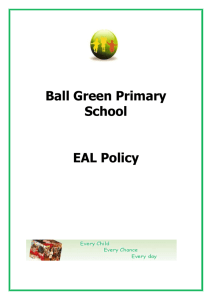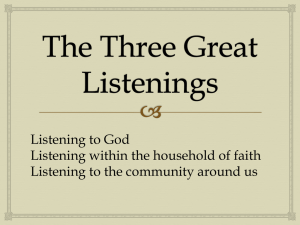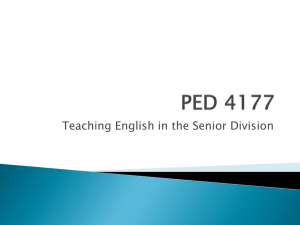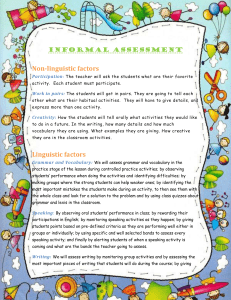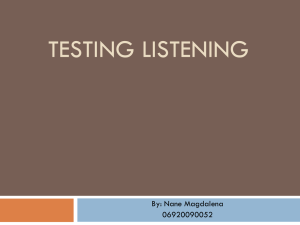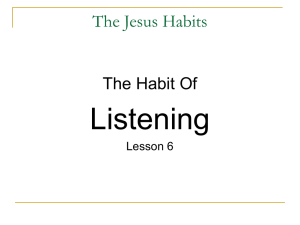Keynote Dr. Hannah Mortimer
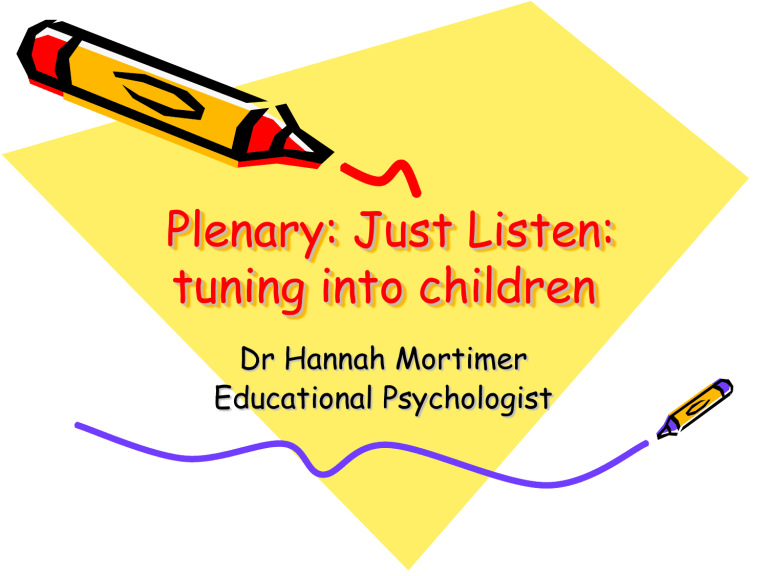
Plenary: Just Listen: tuning into children
Dr Hannah Mortimer
Educational Psychologist
Where we are going …
• Let’s think about our visions and values when listening to young children.
• Communication is a two-way process – so how can we communicate effectively with even very young children?
• How can we use this to ensure that each and every child can participate and belong?
• And how can we consult young children on choices and decisions that affect them?
It’s good to be listened to!
• Think of a time during the last week or so when you simply weren’t listened to.
• Share this with your neighbour
• What did it feel like?
• What did it make you want to do?
(2 mins)
How we listen to young children
• By letting the child lead
• By tuning into their voices and behaviours
• By observing their body language
• Through our use of eye contact
• By mirroring what they say and do
Listening involves …
• Observation – practical ways for tuning in
• Offering choices – and acting on children’s preferences
• Communicating effectively – how we listen and how we feed back
• Ensuring participation – gathering evidence that every child has been listened to and that we have reflected on what they have to tell us.
Why is it important?
• UN Rights of the Child
Article 12: Every child has a right to be heard in the development of policy and practice that affects them
Backed up by Children’s Act 2004, Childcare Act 2006: 3 (5),
Every Child Matters: Change for Children (2004) and the new policy initiatives for Early Years and Childcare.
Why IS it important?
• Listening as an approach to life – a culture …
• Meet Molly!
• Molly and the ‘ditch the dodie’ project
Observing and listening to children
• An active process of receiving, interpreting and responding to communication. It includes all the senses and emotions and is not limited to the spoken word.
• An ongoing part of tuning in to all children as individuals in their everyday lives
• ‘Listening’ is necessary stage in ensuring the participation of all children.
• Sometimes part of a specific consultation about a particular environment, activity, event or opportunity
Simple methods for observing and listening
• Individual and small group talking time
• Using cameras
• Child conferencing
• Observations – open ended and open minded
• Using puppets/stories/small world play/role play
• Using displays –self selected
• Circle time and musical interaction
• Watch, wait, wonder
Tuning In
• Get to know children as individuals
• ‘All about Me’
• Welcome profiles
• Child passports
• Establishing likes/dislikes
• Observations
• ‘My treasure box’
• Children’s prospectuses
Listening to Babies
• How can you ‘listen’ to babies who cannot talk to you?
• Listen to the story of ‘Ellie’s Day’
• Could this approach be adapted for you?
Offering real choices
• When finding resources
• When deciding who to play with
• When encouraging creativity
• When ensuring physical access
• When adapting the session to fit the interests and needs of the children
• When including children with SEN
Sharing the menu
• Swings and roundabouts
• Don’t expect direct answers!
• The Mosaic Approach (Alison Clark): observations/child conferencing / cameras/tours/mapping/role play/parents’ and practitioners’ perspectives ….. Pieced together to create a living picture of what is important to the child
What might you consult on?
• Room layout
• Activities
• Area/resource usage in the setting
• Outdoor play spaces
• What I want to do next
• Who I like to play/work with
• Anything else?
Friendship Matters
Listening to children with PMLD:
- Carefully managed meetings and greetings
- Know when to stand back
- Friends are children we play with
- Encouraging turn-taking and reciprocal play
Friendship Matters
• Inclusive therapy sessions
• Photo books - ‘Meet Harry’
• Persona dolls
• Visual helpers and timetables
• PSA as ‘child magnet’!
• Time to be solitary – My Space, nurture corners
Showing that we listen
• Record when, where, who and the issue concerned
• How did you listen?
• What did you do as a result?
• How did the children give feedback?
• What did they think about it?
The resource
‘Listening to Children in their Early
Years’
By Dr Hannah Mortimer with
SureStart Stockton-on-Tees
Available from: www.qed.uk.com


